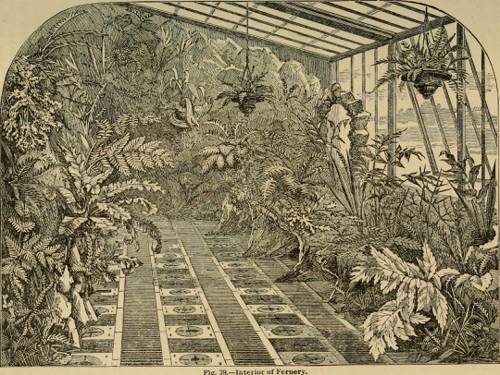
FAQ About Indoor Plant Abiotic Stress Management

What is abiotic stress in indoor plants?
Abiotic stress in indoor plants refers to the negative impact on plant growth and health caused by non-living environmental factors. These stresses can include temperature extremes, light intensity variations, water availability, humidity, and soil nutrient deficiencies. Managing these stresses is crucial to maintaining the health and vitality of indoor plants.

How does light affect abiotic stress in indoor plants?
Light plays a crucial role in a plant's ability to photosynthesize and grow. Inadequate light can lead to poor growth, while excessive light can cause leaf scorching and dehydration. It is important to provide the right amount of light for specific plant species to minimize stress. Using artificial lighting or adjusting natural light exposure can help manage light-related stress.

What are some common signs of abiotic stress in indoor plants?
Common signs of abiotic stress in indoor plants include wilting, yellowing leaves, leaf drop, stunted growth, and brown leaf tips or edges. These symptoms can indicate issues like insufficient watering, improper lighting, or nutrient deficiencies. It's essential to identify the specific cause to properly address and alleviate the stress.

How can temperature cause abiotic stress in indoor plants?
Temperature extremes, either too high or too low, can cause abnormal physiological reactions in plants. High temperatures can increase transpiration, leading to dehydration and wilting. Cold temperatures can slow down metabolic processes, resulting in stunted growth or even plant death. Maintaining a consistent and suitable temperature range is key to preventing temperature-related abiotic stress.

How important is humidity in preventing abiotic stress in indoor plants?
Humidity levels are vital for indoor plant health as they affect water absorption and transpiration rates. Low humidity can lead to increased water loss through leaves, resulting in dehydration and dry leaf tips. Conversely, too much humidity can encourage mold and fungal diseases. Ensuring the right humidity balance by using humidifiers or managing ventilation is important for stress management.

What role do nutrients play in abiotic stress management for indoor plants?
Nutrients are essential for plant growth and the performance of metabolic functions. Deficiencies or excesses can cause stress, leading to symptoms like leaf discoloration or poor growth. Regular fertilization according to the specific needs of your plant species and using a balanced fertilizer can help prevent nutrient-related abiotic stress.

Can poor soil quality lead to abiotic stress for indoor plants?
Yes, poor soil quality can lead to abiotic stress by limiting the available nutrients and affecting water retention. Compacted or low-fertility soil can hinder root development and nutrient uptake. Using high-quality potting soil, ensuring good drainage, and periodically refreshing the soil can improve soil quality and reduce stress.

How does air circulation impact abiotic stress in indoor plants?
Adequate air circulation is important for regulating temperature, humidity, and preventing fungal diseases. Stagnant air can lead to high humidity or increased susceptibility to disease. Using fans or opening windows periodically can help maintain air movement and reduce abiotic stress related to poor ventilation.

How can I identify whether an indoor plant's stress is abiotic or biotic?
Abiotic stress is caused by non-living factors, whereas biotic stress results from living organisms like pests or pathogens. Symptoms of abiotic stress often include uniform damage across several plants, while biotic stress may show patches of damage, holes, or mold. Conducting a thorough plant inspection can help distinguish between the two, focusing on environmental conditions versus signs of pests or diseases.

What are some simple ways to manage heat stress in indoor plants?
To manage heat stress, ensure your plants are not placed in direct sunlight during the hottest parts of the day. Use sheer curtains to diffuse intense sunlight and move plants to cooler areas if necessary. Regular watering and misting can also help cool plants down and reduce heat stress.

How can I manage cold stress for my indoor plants during winter?
To manage cold stress, keep plants away from drafty windows or doors. Use insulating curtains or window films to reduce cold seepage. Ensure plants are not in contact with cold surfaces and consider using a space heater or heat lamp to maintain a warmer environment, if necessary.

Can using artificial lighting help reduce light stress in indoor plants?
Yes, artificial lighting can be a useful tool in reducing light stress, especially during seasons with shorter daylight hours. LED grow lights can mimic natural sunlight and provide plants with consistent and adequate light. Adjusting the intensity and duration based on the plant's specific needs can effectively manage light-related stress.

What is the effect of drought stress on indoor plants, and how can it be managed?
Drought stress occurs when plants do not receive adequate water, leading to wilting, leaf drop, and eventual plant death if prolonged. It can be managed by establishing a regular watering schedule, using drought-resistant soil, and ensuring pots have proper drainage to maintain soil moisture levels.

What are some abiotic stress management techniques for improving indoor plant health?
Some techniques include adjusting light and temperature conditions, ensuring proper watering and humidity levels, using quality soil and appropriate fertilizers, and maintaining good air circulation. Regular monitoring of plant health and adapting environmental conditions to suit the plants' specific needs are key strategies for managing abiotic stress.

How can I prevent salt stress in indoor plants?
Salt stress can occur due to the accumulation of salts in the soil, often from over-fertilization or poor-quality water. To prevent it, use distilled or rainwater for watering, and avoid over-fertilizing. Periodically flush the soil with clean water to leach excess salts beyond the root zone.

Why is it crucial to manage abiotic stress in indoor plants?
Managing abiotic stress is crucial to maintaining the health and aesthetic value of indoor plants. Proper management prevents plant diseases, promotes growth, improves resilience, and extends the plant's lifespan. Healthy plants also contribute to better air quality and can enhance the overall ambiance of indoor spaces.

Can improper pot size lead to abiotic stress in indoor plants?
Yes, using an improperly sized pot can lead to abiotic stress. A pot that is too small may restrict root growth and lead to nutrient deficiencies, while a pot that is too large can cause waterlogging and root rot. Choosing the right pot size based on the plant's growth stage ensures better root development and reduces stress.

How does mineral deficiency contribute to abiotic stress in indoor plants?
Mineral deficiency can lead to abiotic stress by hindering essential metabolic processes. Symptoms such as chlorosis, necrosis, and poor growth are common indicators. Regularly assessing soil nutrients and amending them with appropriate fertilizers can help mitigate mineral deficiency-related stresses.

What role does regular monitoring play in abiotic stress management in indoor plants?
Regular monitoring allows for early detection of stress symptoms before they cause significant damage. By inspecting plants frequently, you can identify issues such as improper light, watering errors, or environmental changes that may require adjustment. This proactive approach enables you to promptly implement solutions to manage and reduce stress.
